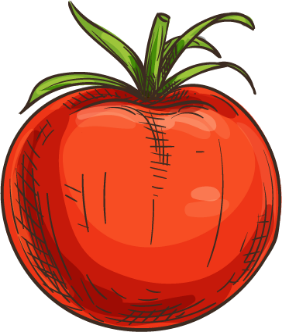
Smart Snacks in Schools
On July 1, 2014, the new regulations that were developed under the HHFKA to address all foods sold in schools (aka “Smart Snacks in School”) came into effect (Final rule was published in 2016.) These regulations were one of the final pieces of the new meal pattern rule that began to be implemented in 2012.

Smart Snacks in Schools
On July 1, 2014, the new regulations that were developed under the HHFKA to address all foods sold in schools (aka “Smart Snacks in School”) came into effect (Final rule was published in 2016.) These regulations were one of the final pieces of the new meal pattern rule that began to be implemented in 2012.
These regulations were one of the final pieces of the new meal pattern rule that began to be implemented in 2012. Smart Snacks addresses all foods sold in schools during the school day–not only in the cafeteria for breakfast and lunch, but anywhere on school campuses. The Smart Snacks standards can be helpful when evaluating a district’s wellness policy, as the stakeholders may need to address how schools support health and wellness beyond the nutrient value and quality of the food served for reimbursable meals.
Smart Snacks in School Standards
- Support for serving more of the foods children should be encouraged to eat
- Support for serving less of the foods children need to be taught to avoid
- Targeted beverage standards that vary by age group
- Flexibility for special events like school parties and bake sales
- Provides definitions for what constitutes the “school day”, “School Campus” and “Competitive foods” to help operators ensure compliance
- A long enough timeline for implementation to allow school districts to resolve the operational challenges presented by the new regulations
Food service departments that have been relying on the sale of competitive foods for part of their income may find it more difficult to comply with the Smart Snacks regulations. Many states across the country, however, have enacted their own legislation regarding the nutritional value of food sold and served in schools outside of the cafeteria. A 2012 report by the CDC analyzed the 39 states that had passed legislation, revealing the depth of the public’s interest in diet and their concern about the health problems that can affect children who habitually consume foods with little or no nutritional value.
The implementation of Smart Snacks in Schools is well under way. The USDA has a wealth of information available on its Smart Snacks resources page. Additionally, a number of tools have been developed that make identification of compliant foods/beverages easy for school operators such as Smart Snacks Product Calculator available on the Alliance for a Healthier Generation’s website.


Food service departments that have been relying on the sale of competitive foods for part of their income may find it more difficult to comply with the Smart Snacks regulations. Many states across the country, however, have enacted their own legislation regarding the nutritional value of food sold and served in schools outside of the cafeteria. A 2012 report by the CDC analyzed the 39 states that had passed legislation, revealing the depth of the public’s interest in diet and their concern about the health problems that can affect children who habitually consume foods with little or no nutritional value.
The implementation of Smart Snacks in Schools is well under way. The USDA has a wealth of information available on its Smart Snacks resources page. Additionally, a number of tools have been developed that make identification of compliant foods/beverages easy for school operators such as Smart Snacks Product Calculator available on the Alliance for a Healthier Generation’s website.

To ensure students are eating a healthy diet, the Chef Ann Foundation continues to support district’s focusing their efforts and resources on encouraging students to consume a reimbursable meal and limiting/eliminating a la carte and Smart Snacks purchases.

To ensure students are eating a healthy diet, the Chef Ann Foundation continues to support district’s focusing their efforts and resources on encouraging students to consume a reimbursable meal and limiting/eliminating a la carte and Smart Snacks purchases.
Recommended Next Topic: Management Tools & Resources
Here are all of the tools and resources from this section in one convenient place.
Recommended Next Topic: Management Tools & Resources
Here are all of the tools and resources from this section in one convenient place.






